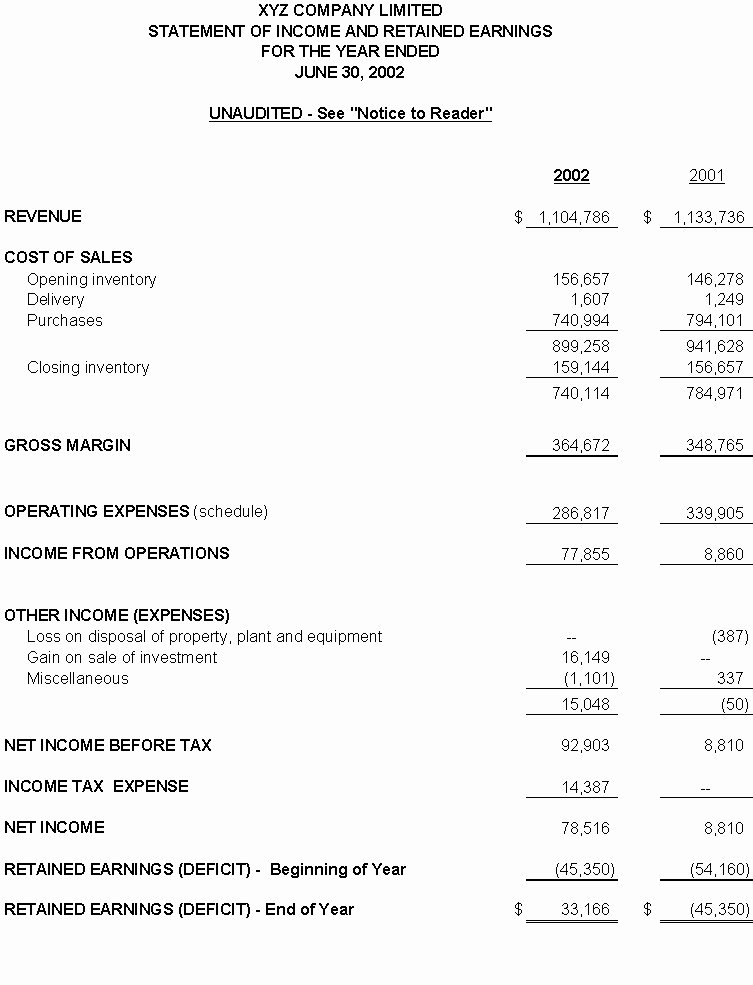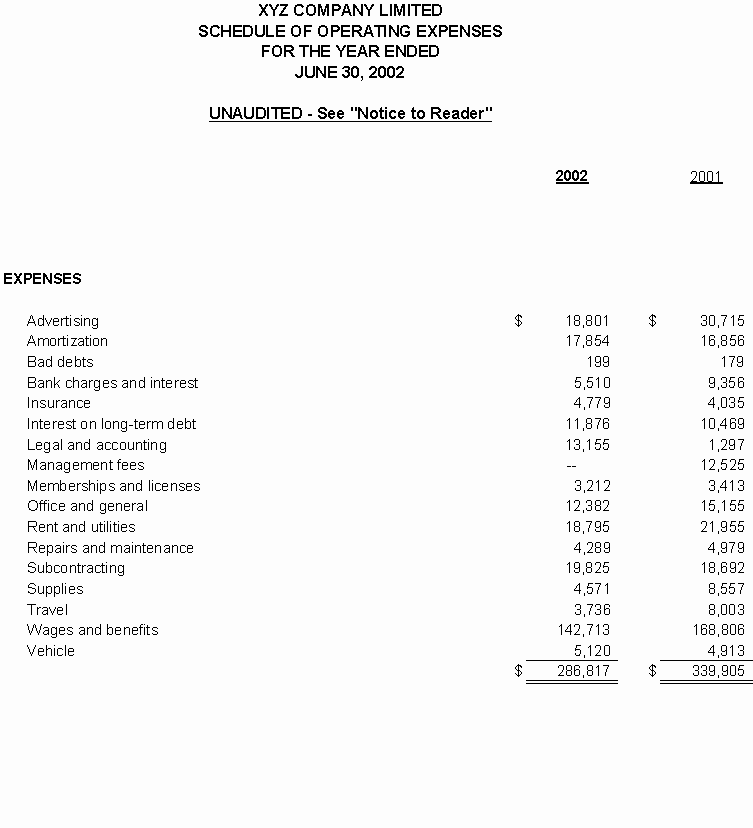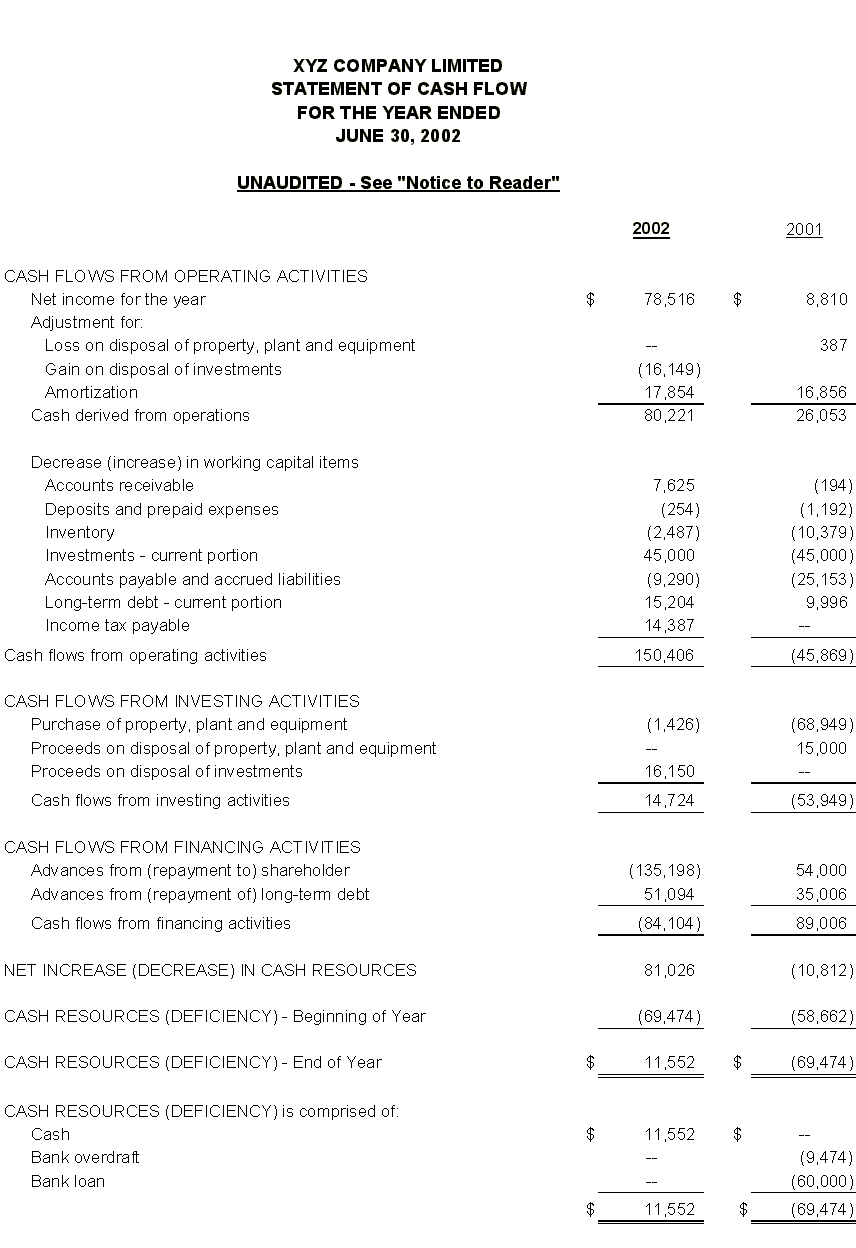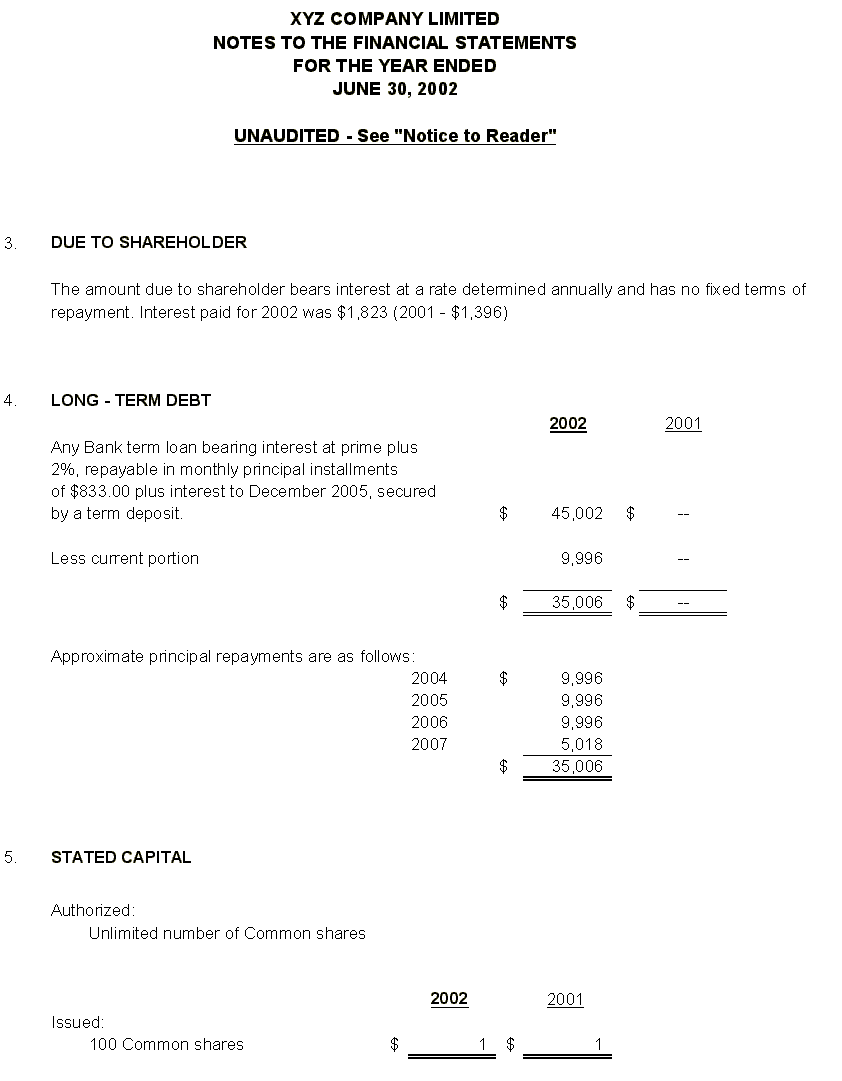|
Understanding Basic Financial Statements
During the accounting cycle, the accounting system is used to track, organize and record the financial transactions of an organization. At the close of each period, the information is used to prepare the financial statements, which are usually composed of a balance sheet (statement of financial position); income statement (statement of income and expenses); statement of retained earnings (owners' equity); and a statement of cash flow.
A sample set of financial statements is shown below.
Financial statements prepared by a Chartered Accountant with a Review Engagement Report or Audit Opinion attached, are prepared (unless noted otherwise) according to "Canadian generally accepted accounting principles", or GAAP. Financial statements that are only compiled or that have a "Notice to Reader" attached, are not necessarily prepared according to GAAP.
Balance Sheet
The balance sheet is based on the equation: assets = liabilities + owners' equity. It indicates everything the company owns (assets), everything the company owes to creditors (liabilities) and the value of the ownership stake in the company (shareholders' equity, or capital). The balance sheet date is the ending date of the period or year, and is a continuation of the amounts recorded since the inception of the company or organization. The balance sheet is a "snapshot" of the financial position of the company at the balance sheet date and shows the accumulated balance of the accounts. Assets and liabilities are separated between current and long-term, where current items are those items, which will be realized or paid, within one year of the balance sheet date. Typical current assets are cash, prepaid expenses, accounts receivable and inventory.
Income Statement
An income statement is a type of summary flow report that lists and categorizes the various revenues and expenses that result from operations during a given period - a year, a quarter or a month. The difference between revenues and expenses represents a company's net income or net loss. The amounts shown in the income statement are the amounts recorded for the given period - a year, a quarter or a month. The next period's income statement will start over with all amounts reset to zero. While the balance sheet shows accumulated balances since inception, the income statement only shows the amounts earned or expensed during the period in question.
Statement of Retained Earnings
The statement of retained earnings shows the amount of accumulated earnings that have been retained within the company since its inception. At the end of each fiscal year-end, the amount of net income or loss is added to the opening amount of retained earnings to arrive at the closing retained earnings. Retained earnings can be decreased by such items as dividends paid to shareholders. On the sample financial statements shown below, the statement of retained earnings is combined with the income statement presentation.
Statement of Cash Flow
The statement of cash flow shows all sources and uses of a company's cash during the accounting period. Sources of cash listed on the statement include revenues, long-term financing, sales of non-current assets, an increase in any current liability account or a decrease in any current asset account. Uses of cash include operating losses, debt repayment, equipment purchases and increases in current asset accounts.
|






